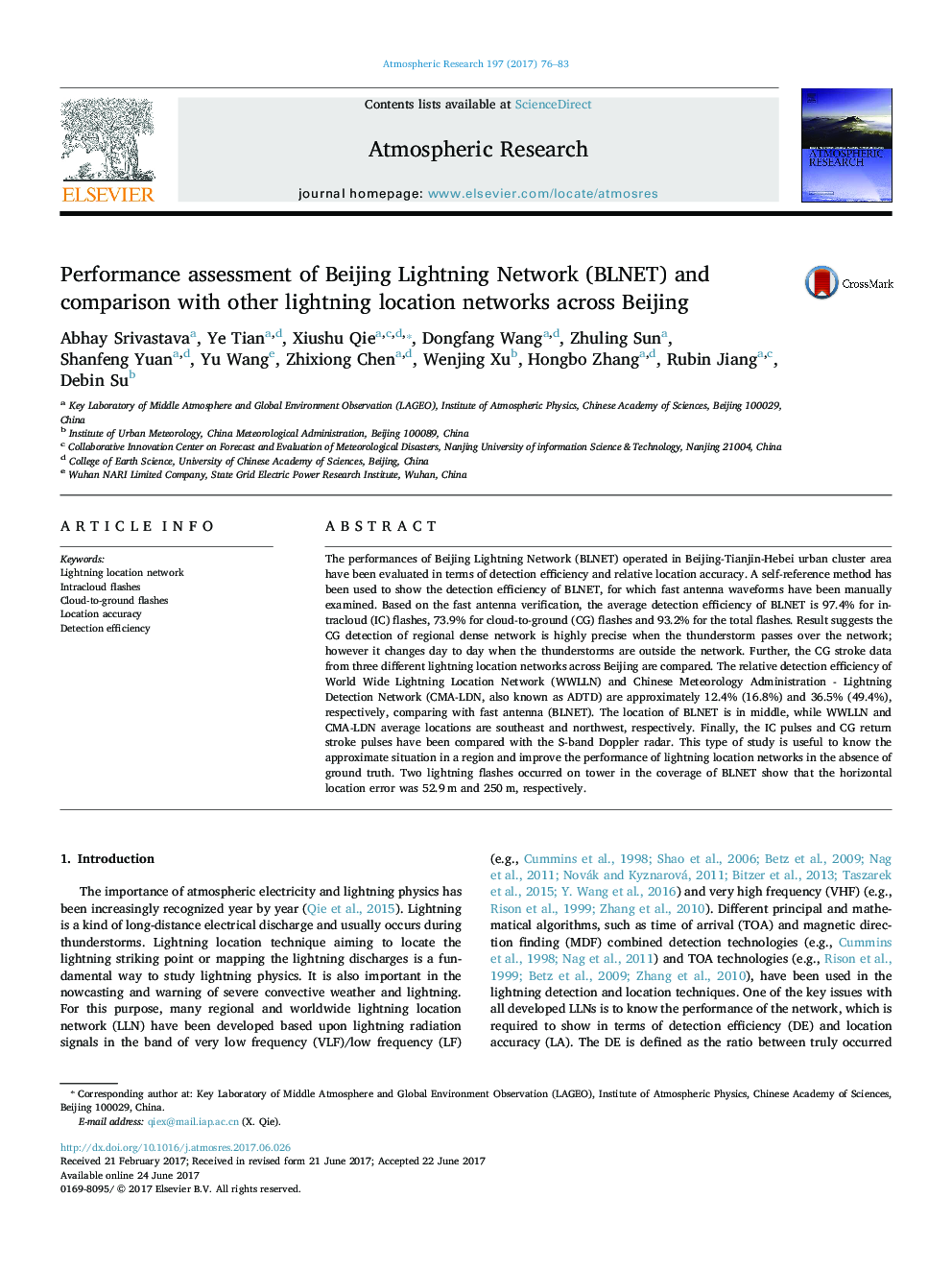| کد مقاله | کد نشریه | سال انتشار | مقاله انگلیسی | نسخه تمام متن |
|---|---|---|---|---|
| 5753730 | 1620484 | 2017 | 8 صفحه PDF | دانلود رایگان |

- Self-reference method to obtain DE of IC and CG based on waveform from the entire sensor used to locate lightning in BLNET.
- Comparison of regional, subcontinent and long range LLN with radar
- Performance of subcontinent and long range LLN using BLNET
The performances of Beijing Lightning Network (BLNET) operated in Beijing-Tianjin-Hebei urban cluster area have been evaluated in terms of detection efficiency and relative location accuracy. A self-reference method has been used to show the detection efficiency of BLNET, for which fast antenna waveforms have been manually examined. Based on the fast antenna verification, the average detection efficiency of BLNET is 97.4% for intracloud (IC) flashes, 73.9% for cloud-to-ground (CG) flashes and 93.2% for the total flashes. Result suggests the CG detection of regional dense network is highly precise when the thunderstorm passes over the network; however it changes day to day when the thunderstorms are outside the network. Further, the CG stroke data from three different lightning location networks across Beijing are compared. The relative detection efficiency of World Wide Lightning Location Network (WWLLN) and Chinese Meteorology Administration - Lightning Detection Network (CMA-LDN, also known as ADTD) are approximately 12.4% (16.8%) and 36.5% (49.4%), respectively, comparing with fast antenna (BLNET). The location of BLNET is in middle, while WWLLN and CMA-LDN average locations are southeast and northwest, respectively. Finally, the IC pulses and CG return stroke pulses have been compared with the S-band Doppler radar. This type of study is useful to know the approximate situation in a region and improve the performance of lightning location networks in the absence of ground truth. Two lightning flashes occurred on tower in the coverage of BLNET show that the horizontal location error was 52.9Â m and 250Â m, respectively.
Journal: Atmospheric Research - Volume 197, 15 November 2017, Pages 76-83